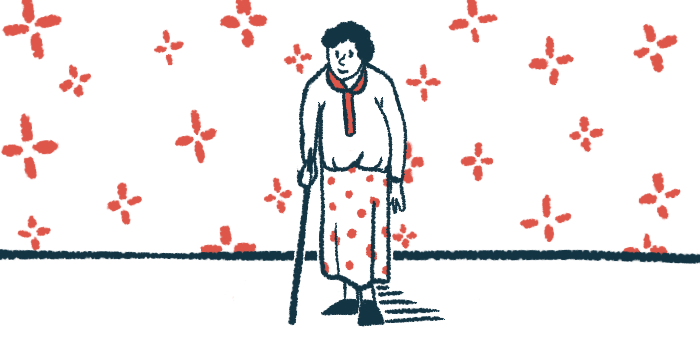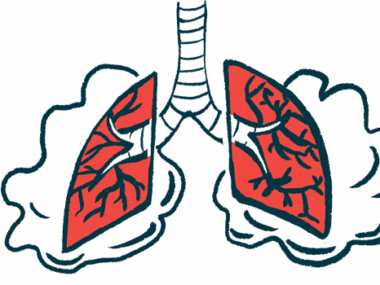Frail ANCA-associated vasculitis patients at more risk of infection
Previous research has primarily focused on chronological age as AAV risk factor
Written by |

Being frail, that is, more vulnerable to health stressors as a result of aging-related biological changes, may put older adults with ANCA-associated vasculitis (AAV) at higher risk of developing severe infections, a study in the U.S. suggests.
Being age 75 or older, but not frail, was linked to a higher risk of kidney failure or death within two years of a diagnosis of AAV, suggesting that an “assessment beyond chronological age could better inform management decisions in older adults,” the researchers wrote.
The study, “The effects of age and frailty on the risks of end-stage renal disease, death, and severe infection in older adults with antineutrophil cytoplasmic antibody-associated vasculitis: a retrospective cohort study,” was published in The Lancet Rheumatology.
In AAV, self-reactive antibodies wrongly bind to immune cells called neutrophils and overly activate them, causing inflammation and damage to neighboring small blood vessels. The disease often affects the kidneys, which can lead to end-stage kidney disease or kidney failure, where the organs aren’t able to function adequately without regular medical intervention.
Research has shown that AAV patients ages 75 or older “have a higher risk for all-cause mortality (primarily driven by infections and cardiovascular disease) and a greater burden of end-stage renal disease, severe infections, and damage accrual during follow-up than younger individuals,” the researchers wrote.
Previous research has mainly focused on chronological age as a risk factor and overlooked other factors like frailty, which is a state of increased vulnerability due to aging-associated decline in reserve and function of several physiologic systems. This comprises the body’s ability to cope with daily or sudden stressors and restore a balanced state of health.
Assessing age, frailty in AAV patients’ risk of infection
“However, studies in the general population and community-dwelling older adults have shown that measures of biological age such as frailty are better predictors of poor outcomes than chronological age,” wrote researchers in the U.S. who assessed the impact of age and frailty on the risk of severe infection, kidney failure, and death among 234 AAV patients treated at a single U.S. hospital between 2002 and 2019.
Those diagnosed with eosinophilic granulomatosis with polyangiitis, the rarest and most distinct type of AAV, weren’t included in the analysis. Frailty, measured through the validated claims-based frailty index, was used to measure biological age, as opposed to chronological age.
A total of 116 patients were aged between 65-74 (median age, 70), while 118 patients were 75 or older (median age, 81). A greater proportion of patients aged 75 and older were moderately or severely frail compared with the younger group (37% vs. 22%).
Statistical analyses showed being 75 or older was significantly associated with a 4.5 times higher risk of kidney failure or death in the two years after a diagnosis compared with the younger ages. No such association was found for frailty, however, suggesting chronological age remains a stronger risk factor for kidney failure or death.
But both older age (75 or older) and frailty were independent risk factors of severe infections within two years of a diagnosis, with frailty showing a greater effect. Patients aged 75 or older had a 2.5 times higher risk of severe infection than younger ones, while frail patients had a nearly 8.5 times greater risk than those who weren’t frail (non-frail) or weren’t frail yet (pre-frail). Pre-frail patients are closer to reaching the frailty threshold scores in the claims-based frailty index than non-frail patients.
Differences in age groups
When analyzing data for each age group, the researchers found that frailty had a greater effect on the rate of kidney failure or death among patients aged 65-74 than in the older group. Specifically, the number of cases of kidney failure or death per 100 person-years was higher for frail patients than non-frail patients in the younger group (7.5 vs. 2), but lower for frail patients in the older group (13.5 vs. 16). Person-years combine the number of people studied and the time each was observed, so 100 person-years could mean 100 people were studied over a year.
“We found that, especially among adults aged 65–74 years, frailty is an important factor associated with risk of poor outcomes,” the researchers wrote.
Frailty was also associated with a higher number of cases of severe infection per 100 person-years both in the younger group (38.9 vs. 0.8) and the older group (61.9 vs. 12.3). This suggests frailty may add valuable information to a patient’s records.
“Older age, but not frailty, was associated with an increased risk of [kidney failure] or death within [two] years of diagnosis, whereas frailty was a risk factor for severe infection,” the researchers wrote. “Our results highlight the fact that assessment of frailty in the care of older adults with ANCA-associated vasculitis can distinguish a group of patients at increased risk of severe infections who might benefit from interventions to minimize infection risk and optimize outcomes.”
They said doctors treating older adults with AAV should look at both chronological age and frailty to tailor treatment plans and weigh “innovative considerations beyond chronological age to guide outcome and risk assessment.”






